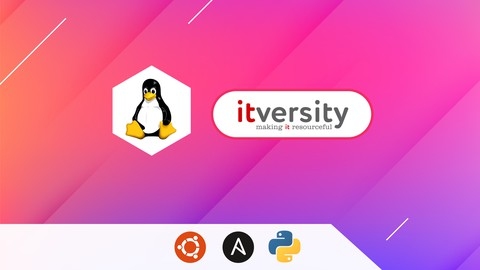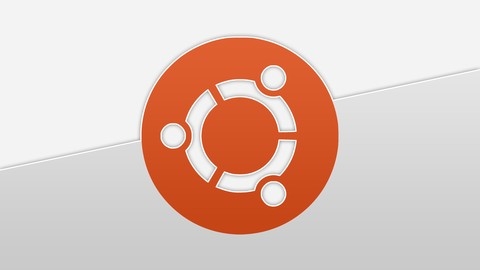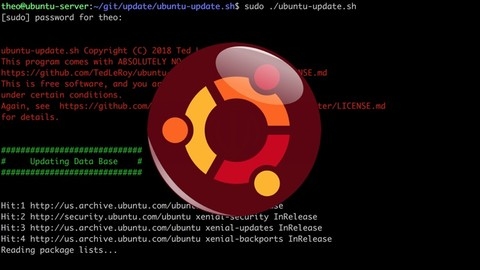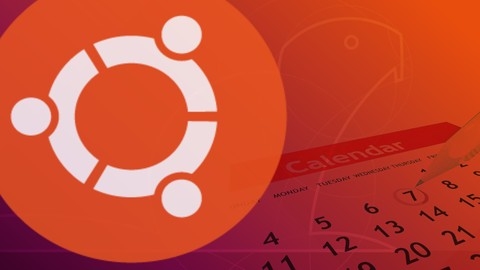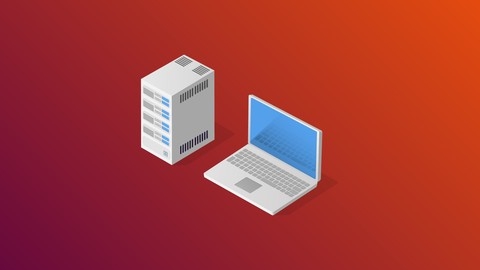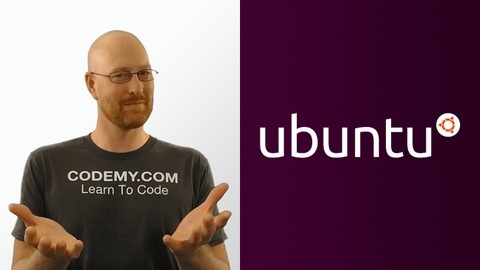Ubuntu is a popular Linux distribution known for its user-friendly interface and robust features, making it suitable for various purposes, from personal computing to server administration.
Learning Ubuntu can open doors to exciting career opportunities in IT, web development, and more.
You can build powerful applications, manage systems efficiently, and even delve into the world of cybersecurity.
Finding a high-quality Ubuntu course on Udemy can be a challenge with so many options available.
You’re looking for a course that goes beyond the basics and equips you with the practical skills needed to confidently navigate and utilize the Ubuntu environment.
We’ve carefully reviewed numerous Udemy courses and recommend Ubuntu Linux Server Basics as the best overall course.
This comprehensive program guides you through the installation process, explores fundamental concepts, and teaches you essential system administration tasks, all in a clear and engaging manner.
You’ll learn to manage users, configure networking, set up a web server, and even dive into more advanced topics like RAID and security.
While this course is our top pick, there are many other excellent Ubuntu courses on Udemy.
Keep reading to explore our recommendations for different learning levels, specific areas of interest, and career aspirations.
Ubuntu Linux Server Basics
The course starts by introducing you to Linux and guiding you through the installation process.
You’ll learn what a computer server is, what Linux and Ubuntu are, and how to download and install Ubuntu Server.
There’s even a bonus video on installing Ubuntu when it’s snowing in Texas!
Once you’ve installed Ubuntu, the course dives into the basics.
You’ll learn about security concepts like ‘sudo’ and the ‘root’ user, navigating the file system, managing files and directories, and controlling output.
You’ll also learn how to copy, move, and delete files, shut down the system, and find help when needed.
On Day 2, you’ll focus on system management tasks.
This includes changing the system date and time, managing users and groups, installing programs and understanding dependencies, configuring basic networking, and managing file permissions.
There’s even a bonus video on using ACLs for advanced permission management.
You’ll also learn about managing the filesystem, including creating partitions and formatting drives.
Day 3 covers core features and functions that server administrators use daily.
You’ll learn about RAID and how to create a RAID 1 array using ‘mdadm’.
You’ll also learn how to set up a simple file server using Samba, schedule tasks with cron jobs, connect to the server remotely via SSH, and configure the Apache web server.
The course wraps up with extra tips and tricks, like using the ’links’ web browser, managing the server with Webmin, using WinSCP for file transfers, process management, and creating simple shell scripts.
There’s even a bonus section on installing MySQL and PHP, covering topics like tarballs, compression, and working with databases.
Throughout the course, you’ll encounter quizzes and reviews to test your knowledge of the material covered.
Linux Fundamentals for IT Professionals using Ubuntu 20x
You’ll start by learning how to set up Ubuntu on Windows using WSL (Windows Subsystem for Linux) or as a virtual machine.
This allows you to follow along with the course material on your Windows system.
Once you have Ubuntu set up, you’ll dive into the fundamentals of the Linux shell and command line.
You’ll learn essential commands for navigating the file system, creating and managing files and directories, processing data in files, understanding file permissions, and more.
The course covers commands like ls, cd, mkdir, rm, cp, mv, grep, find, sort, uniq, and many others.
A key focus is on automating tasks using scripts and commands.
You’ll learn how to write simple shell scripts, use environment variables, and incorporate Linux commands into Python scripts for more advanced automation.
The course even touches on using Ansible for server automation with playbooks and roles.
To facilitate hands-on learning, you’ll set up resources like an Apache web server, MongoDB database, and Jupyter Lab environment on your Ubuntu system.
This allows you to practice real-world scenarios like troubleshooting application logs, monitoring system performance with tools like top and ps, and managing services with systemctl.
The course also covers networking concepts relevant to Linux, such as understanding IP addresses, DNS, ports, and security groups.
You’ll learn how to securely copy files between systems using scp and ssh.
For developers, you’ll get an overview of tools like WinSCP, Visual Studio Code with its remote development capabilities, Git, and Beyond Compare for comparing code.
Ubuntu Desktop for Beginners: Start Using Linux Today!
This course covers everything from downloading and installing Ubuntu to using essential applications and troubleshooting common issues.
You’ll begin by learning how to download Ubuntu 14.04 LTS and prepare installation media for physical or virtual machines using VirtualBox.
The course walks you through the installation process, including setting up VirtualBox for those using virtual machines.
Once Ubuntu is installed, you’ll dive into the basics of navigating the desktop environment, using the launcher, and customizing system settings.
You’ll also learn about Ubuntu’s development codenames and how to install programs from the Software Center or using Debian packages.
The course covers essential tasks like working with compressed archives, enabling automatic software updates, and using keyboard shortcuts.
You’ll even learn how to close unresponsive programs with the ‘xkill’ command.
For multimedia enthusiasts, the course teaches you how to play DVDs, use PlayOnLinux for running Windows applications, and explores alternatives to iTunes like ‘atunes’ and the Banshee media player.
Video editing and image editing with GIMP (a Photoshop alternative) are also covered.
A significant portion of the course is dedicated to using the Terminal, a powerful command-line interface.
You’ll learn how to navigate the file system, understand security basics with ‘sudo’, and install programs using the APT package manager.
If you encounter any issues, the course provides guidance on troubleshooting common problems, such as fixing network issues, resetting lost passwords, and resolving boot problems with GRUB.
Throughout the course, you’ll gain hands-on experience with essential Linux concepts like the command line, package management, and system administration tasks.
Ubuntu Linux Fundamentals Linux Server Administration Basics
This course provides an excellent introduction to managing and administering an Ubuntu Linux server.
It covers all the essential topics in-depth, guiding you through the process of setting up, securing, and maintaining an Ubuntu server step-by-step.
The course begins by explaining what Ubuntu is and how it differs from other operating systems.
It then walks you through installing Ubuntu Server on VirtualBox, a free virtualization software, allowing you to practice on a virtual machine without affecting your main system.
This hands-on approach is incredibly valuable for beginners.
Once the installation is complete, the course dives into the core concepts of Linux, such as the file system structure, managing software with APT (Advanced Packaging Tool), and understanding file permissions.
These foundational topics are crucial for anyone working with Linux systems.
One of the course’s strengths is its focus on security.
It dedicates several lessons to securing your Ubuntu Server, including configuring firewalls (ufw), disabling unnecessary services, managing sudo permissions, and implementing fail2ban to block malicious login attempts.
Additionally, it covers setting up secure remote access using SSH (Secure Shell) with public-key authentication, a vital skill for remote server administration.
The course also covers essential system administration tasks, such as monitoring system performance, checking disk space and memory usage, scheduling tasks with cron, and managing users and groups.
These practical skills are invaluable for anyone responsible for maintaining a Linux server.
Furthermore, the course guides you through creating a web server using the popular nginx web server and securing it with SSL/TLS encryption, configuring error pages, and hardening the server against potential attacks.
This section is particularly useful for those interested in hosting websites or web applications on their Ubuntu Server.
Towards the end, the course demonstrates how to deploy a WordPress site on your Ubuntu Server, covering the installation of the LAMP stack (Linux, Apache, MySQL, and PHP), configuring the firewall, and securing the WordPress installation with plugins like Jetpack and Wordfence.
This real-world example solidifies the concepts learned throughout the course.
The instructor’s clear explanations, supplemented by downloadable resources and practical activities, make it easy to follow along and reinforce the learned concepts.
Learn Ubuntu in 7 days
The course starts by guiding you through installing Ubuntu on your computer.
Once installed, you’ll learn how to use and customize the desktop environment to suit your preferences.
On day 3, you’ll dive into installing and managing software on your Ubuntu system.
This is crucial for getting the applications and tools you need for your daily tasks.
The following day covers using the internet and setting up email, ensuring you can stay connected and communicate effectively.
The course then moves on to multimedia, teaching you how to play music and videos on day 5.
The next day, you’ll learn to manage your photos and even try out some gaming on your Ubuntu machine.
Finally, on day 7, you’ll be introduced to the powerful Linux terminal.
This is a key component of the course, as the terminal allows you to perform advanced tasks and automate processes more efficiently.
You’ll learn useful terminal commands, a highly valuable skill in the IT industry.
UBUNTU Linux Server
You’ll start by learning how to install Ubuntu Server and connect to it remotely using SSH.
Next, you’ll dive into securing your server by configuring automatic security updates, setting up a firewall, and exploring log files for monitoring purposes.
The course will guide you through managing networking, processes, resources, services, and user accounts on your Ubuntu Server.
One of the key focuses is exploring common services like HTTP servers (Apache), databases (MySQL), and web applications (Moodle).
You’ll learn how to install, configure, and secure these services, including setting up TLS encryption for your HTTP server.
The course also includes practical demos, such as dual-booting Ubuntu and Windows 10, as well as showcasing useful Ubuntu commands.
Additionally, you’ll get a step-by-step walkthrough on installing the popular LAMP stack (Linux, Apache, MySQL, PHP) and Moodle, a learning management system.
Throughout the course, you’ll gain hands-on experience with essential Linux commands and tools, equipping you with the skills to effectively manage and maintain an Ubuntu Server environment.
Ubuntu Linux Desktop Basics
You’ll start by learning the basics, including how to install Ubuntu on a virtual machine or directly on your computer.
Once you’ve set up Ubuntu, you’ll dive into the GNOME desktop environment, exploring its shell and learning how to perform common tasks like connecting to networks, browsing the web, and managing files and folders.
You’ll also learn how to work with external storage devices, add and update software, and handle documents and spreadsheets.
It also covers more advanced topics like managing your Linux computer, backing up data, adding new users, and sharing files over a network.
You’ll even learn how to find out what your system is doing under the hood.
For those looking to take their Ubuntu skills to the next level, the course offers lessons on using the Terminal and understanding the Linux folder structure.
It even includes a step-by-step demo on how to install Moodle, a popular open-source learning management system, on Ubuntu 18.
One of the highlights is the dual boot demo, which shows you how to set up Ubuntu alongside Windows 10 on the same machine.
This can be incredibly useful for those who need to use both operating systems.
Throughout the course, you’ll gain hands-on experience with essential Linux commands, making you comfortable with the command line interface.
Ubuntu Linux on Windows With VirtualBox For Web Development
The course starts by teaching you how to install and use Ubuntu Linux on your Windows computer for coding purposes.
You’ll learn to install VirtualBox software, which allows you to run Ubuntu within Windows.
Next, you’ll download Ubuntu and create a virtual machine to install it using VirtualBox.
Once Ubuntu is set up, you’ll install essential tools like the Chrome web browser and Sublime Text editor for coding.
The course will guide you through exploring the Terminal, which is a powerful command-line interface in Linux.
You’ll learn how to update Python, a popular programming language, and install virtualenv, a tool for creating isolated Python environments.
Setting up virtualenv and Django, a high-level Python web framework, is also covered.
This will prepare you for web development projects.
Version control is crucial for any developer, so you’ll learn how to install Git and set up a GitHub account to push your code to remote repositories.
Throughout the course, you’ll have access to support resources to get help quickly when needed.
The bonus lecture promises additional valuable content.
Linux for Beginners using Ubuntu (Learn Linux Basics)
The course begins by guiding you through the installation process, whether you prefer using Oracle VirtualBox or VMware to run Ubuntu on your Windows machine.
You’ll learn how to create a bootable USB drive for Ubuntu installation as well.
Once you have Ubuntu set up, the course dives into the basics of using the Linux command line.
You’ll learn essential commands like ls, cd, cat, mkdir, rm, cp, mv, and more.
The course also covers file permissions, symbolic permissions, and how to use chmod.
Additionally, you’ll get an introduction to Bash scripting and learn commands for user and group management.
Moving on, the course teaches you how to extract tar.gz files, install packages like build-essential, and configure Git and GitHub repositories on Ubuntu.
You’ll even learn how to reset the root password if needed.
For developers, the course covers installing various programming languages and IDEs on Ubuntu.
You’ll learn how to install Python and PyCharm, Java JDK and IDEs like IntelliJ IDEA and NetBeans.
For C++ developers, the course covers installing GCC, Eclipse with the C/C++ plugin, Code::Blocks, and CLion.
You’ll also learn about using make and writing Makefiles.
It also covers installing popular code editors like Emacs, Microsoft Visual Studio Code, and Atom Editor on Ubuntu.
If you’re interested in Android development, you’ll learn how to download and install the Android SDK and Genymotion emulator.
For those interested in web development, the course teaches you how to install and run Apache Web Server, PHP, MySQL, and PhpMyAdmin on Ubuntu.
You’ll even learn how to install Jenkins for continuous integration and deployment.
The course also covers installing databases like MySQL, PostgreSQL, and Redis on Ubuntu.
Additionally, you’ll learn how to install general-purpose tools like PERL, Notepad++, Network Simulator 2, Arduino IDE, and TeamViewer for remote desktop access.
Learning Ubuntu Linux. A Training Video From Infinite Skills
You’ll start with an introduction to Linux, its distributions, and how to obtain and install Ubuntu.
Once you’ve set up Ubuntu, the course will guide you through the desktop environment, teaching you how to navigate the panel and dock, find and run programs, customize your setup, and use essential utilities like the terminal and office apps.
File management is a crucial aspect covered in-depth, including listing files, understanding permissions, copying, moving, and renaming files, exploring the filesystem layout, editing files, working with special files, creating links, and compressing data.
System management is another key area, where you’ll learn about package management, logging, service management, process monitoring and control, building software, using utilities like grep and sed, managing kernel modules and configuration, user account management, automating tasks with cron, and leveraging sudo.
Networking and security are essential topics, covering network interfaces, DNS utilities, changing nameservers, basic troubleshooting with ping and traceroute, informational utilities like netstat and ifconfig, packet captures, configuring IPTables firewall, setting up an SSH server, and using netcat.
Disk management skills are also imparted, including partitioning with fdisk, adjusting hard drive parameters with hdparm, setting up RAID arrays, using logical volume management, formatting filesystems, mounting volumes, working with removable media, and exploring other filesystems.
To solidify your learning, you’ll go through a hands-on project of installing and configuring a web application stack with Apache, MySQL, and PHP, along with setting up Samba for file sharing.
This includes unpacking and configuring WordPress, creating a database and user, setting permissions, and using HTML editors.
Finally, the course delves into advanced topics like Bash scripting, programming with Perl, Python, Ruby, and C, and an introduction to IPv6.


